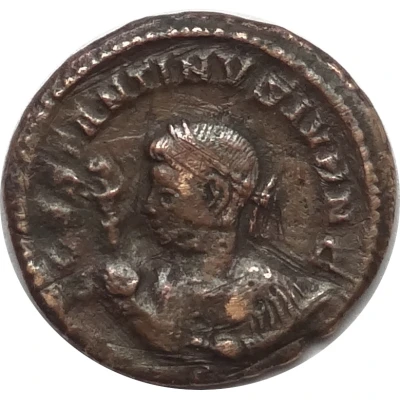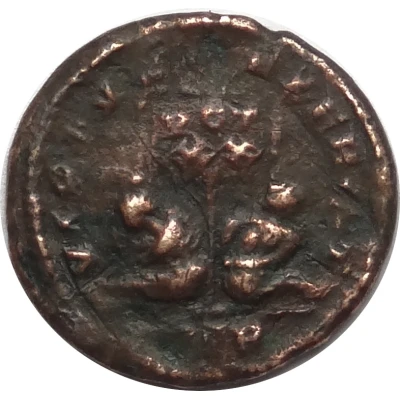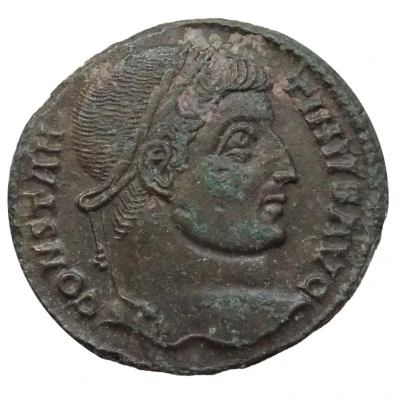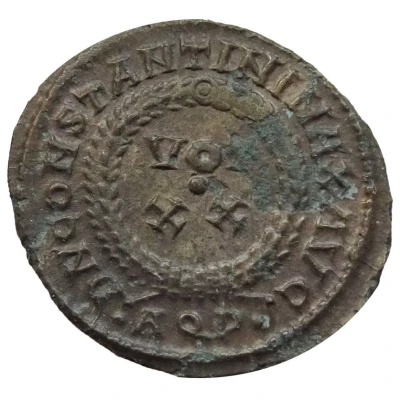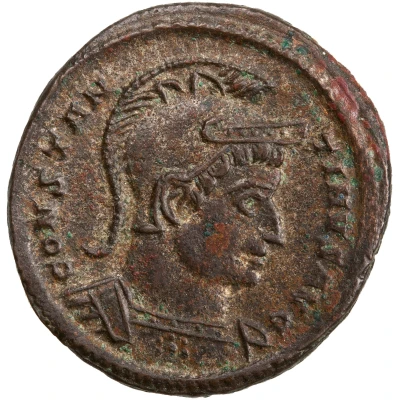
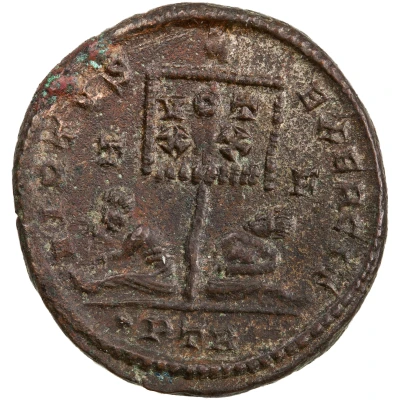

© American Numismatic Society (ANS)
Follis - Constantinus I VIRTVS EXERCIT; Treveri
| Bronze | 2.53 g | 19 mm |
| Issuer | Rome › Roman Empire (27 BC - 395 AD) |
|---|---|
| Emperor | Constantine I (Flavius Valerius Constantinus) (306-337) |
| Type | Standard circulation coin |
| Years | 320-321 |
| Value | Follis (1⁄180) |
| Currency | Solidus, Reform of Constantine (AD 310/324 – 395) |
| Composition | Bronze |
| Weight | 2.53 g |
| Diameter | 19 mm |
| Shape | Round (irregular) |
| Technique | Hammered |
| Orientation | Variable alignment ↺ |
| Demonetized | Yes |
| Updated | 2024-10-04 |
| Numista | N#344009 |
|---|---|
| Rarity index | 97% |
Reverse
Standard inscribed VOT/XX flanked by two seated captives
Script: Latin
Lettering:
VIRTVS EXERCIT
T F
Unabridged legend: Virtus exercitus
Translation: Courage of the army
Interesting fact
The Follis coinage was introduced by Emperor Diocletian in 294 AD as a reform to the Roman currency system, which had been suffering from inflation and debasement. The Follis coin was made of bronze and had a standardized weight and size, which helped to restore confidence in the currency and stabilize the economy. The coin , featuring Constantinus I, was part of this Follis series and was minted in 320-321 AD. Despite being made of bronze, the coin still featured intricate designs and inscriptions, such as the image of the emperor on one side and the inscription "VIRTVS EXERCIT" (Virtus Exercitus) on the other, which translates to "The Virtue of the Army." This coin is a testament to the engineering and artistic skills of the ancient Romans and is a valuable piece of history for collectors and historians alike.
